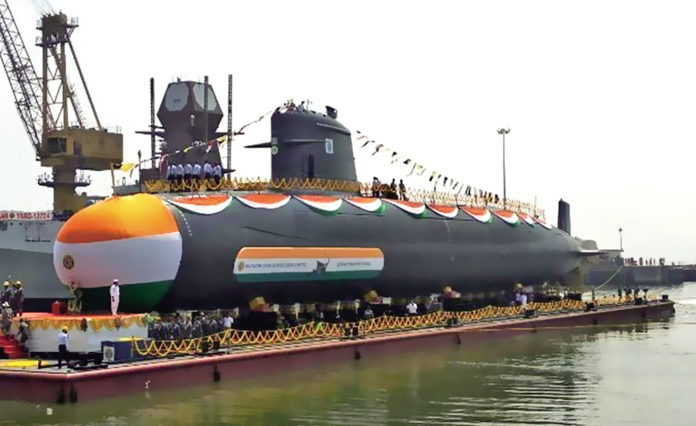The Defence Acquisition Council (DAC), on 21 January, cleared two Indian and five foreign shipbuilders to take part in a Rs 50,000 crore project to build six high-tech submarines under project P-75I in the country, one of the costliest Make in India programmes in the military sector.
The DAC is headed by the defence minister. The other members of the council are the minister of state for defence, the chief of defence staff, the three service chiefs, the defence secretary, secretary defence research and development, secretary defence production and director general, acquisition. Gen Bipin Rawat attended the DAC meeting for the first time as the Chief of Defence Staff (CDS).
P-75I submarines will scale up the navy’s undersea warfare capabilities and counter the rapid expansion of the China’s submarine fleet. The project will be pursued under the government’s ‘strategic partnership’ (SP) model, which seeks to provide fillip to the government’s Make in India programme.
The DAC short-listed the Indian strategic partners and potential original equipment manufacturers (OEMs) who would collaborate to construct six conventional submarines in India.
The Indian strategic partners cleared to collaborate with the foreign OEMs are Mazagon Dock Shipbuilders Limited (MDL) and Larsen &Toubro (L&T). The foreign yards they can team up with for the project are the French Naval Group, German conglomerate Thyssenkrupp Marine Systems, Russia’s Rubin Design Bureau, Spain’s Navantia and South Korea’s Daewoo Shipbuilding & Marine Engineering Company.
Hindustan Shipyard-Adani Bid Rejected
A joint venture between the Adani Group and state-owned Hindustan Shipyard Limited (HSL) was rejected by an empowered committee as it did not meet the eligibility criteria for being shortlisted as a strategic partner (SP). The Congress Party had alleged earlier that the Modi government was planning to overrule Navy decision to favour the Adani Group for the construction of the submarines, violating the defence procurement policy (DPP).
The two Indian entities were selected as strategic partners after an examination of financial records and manufacturing facilities by the Navy’s empowered committee. Both state-owned MDL and private sector giant L&T have considerable experience in shipbuilding. The empowered project committee was formed with the Navy’s Controller of Warship Production and Acquisition as the head of the panel including several other Joint Secretaries as its members.
It was the second project to be cleared under the SP model after the DAC, in August 2018, approved a project to build 111 naval utility helicopters in the country to replace the navy’s outdated fleet of French-designed Chetak choppers. The naval utility helicopter (NUH) project is worth Rs 21,738 crore.
Further Process
It will take years for the submarine project to materialise as the process is quite long-drawn out.
The ministry will take the project forward by issuing requests for proposals (RFPs) to the short-listed Indian strategic partners who will then respond with techno-commercial offers in collaboration with one of the short-listed OEMs. In exceptional cases, rules allow the Indian strategic partner to submit techno-commercial offers in collaboration with two OEMs.
The next steps would involve opening and evaluation of technical offers, trials, staff evaluation, opening of commercial offers of companies technically compliant with the RFP and finally, the selection of the strategic partner with the lowest bid.
P75I Submarines
The plan to build six new submarines as part of Project 75I(I for India) is a follow-on of the Project 75 Kalvari-class submarines. Under this project, the Indian Navy intends to acquire six diesel-electric submarines, which will also feature advanced air-independent propulsion systems to enable them to stay submerged for longer duration and substantially increase their operational range.
The Navy wants the submarines to be equipped with heavy-duty firepower as it wants the boats to have at least 12 Land Attack Cruise Missiles (LACM) along with Anti-Ship cruise missiles (ASCM). The Navy specified that the submarines should also be able to carry and launch 18 heavyweight torpedoes in the sea. Compared with the Scorpene, the firepower required in the next line of submarines is many times more than what is being put on the Scorpenes which have the heavyweight torpedoes and the Exocet surface to surface missiles as their main weapons.


















